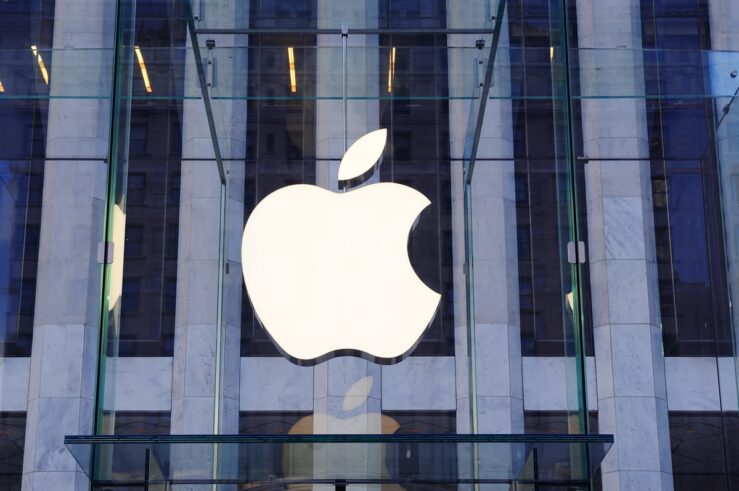I’ve had the pleasure of spending the last few weeks curled up with Herbert Hovenkamp’s wonderful new book, The Antitrust Enterprise: Principle and Execution, which I’m reviewing for the Texas Law Review. Hovenkamp is a sharp thinker and a wonderfully clear writer, and the book is a fantastic read for scholars and students alike. As a reviewer, though, I’m charged with pointing out the weak spots. Hovenkamp’s discussion of Illinois Brick‘s indirect purchaser rule is, I believe, one of those spots.
For the unitiated, the Supreme Court’s famous Illinois Brick decision held that those who purchase only indirectly from a monopolist or cartel may not recover overcharge damages; instead, the direct purchaser may collect the entire amount of any overcharge, even if that purchaser has passed some of the overcharge on to downstream (i.e., indirect) purchasers. As Hovenkamp notes, the primary rationale for the Court’s holding in Illinois Brick was the tremendous difficulty of accurately determining, in a judicial proceeding, the proportion of an overcharge passed on to downstream purchasers.
While he agrees that computing passed-on damages is extraordinarily difficult, Hovenkamp maintains that that difficulty does not justify the rule precluding indirect purchaser actions. He asserts that the Illinois Brick Court’s reasoning relied on two false assumptions: first, that “overcharge� was the proper measure of damages for every firm in the defendant’s distribution chain; and second, that calculating downstream damages would require tracing and apportionment of the initial overcharge among the direct purchaser and the various downstream purchasers.
With respect to the first assumption, Hovenkamp argues that overcharge is not the proper measure of damages for intermediary purchasers (e.g., assemblers, distributors, or retailers), who will generally respond to supracompetitive pricing by passing along at least some of the price increase and suffering reduced sales as a result of their higher prices. For example, if a cartel of liquor manufacturers raises the price of a bottle of liquor from $10 to $14, retailers may respond by raising the retail price of a bottle from $13 to $16. Their losses will consist of an absorbed overcharge of $1 per bottle sold plus the profit losses resulting from reduced sales at a $16 retail price (less any incremental profits from increased sales of alternative liquors). An overcharge measure, Hovenkamp observes, “never captures the losses resulting from lost volume.� By contrast, a “lost profits� measure would do so and would account for the degree to which middlemen are able to pass overcharge on to downstream purchasers.
With respect to the second assumption, Hovenkamp asserts that indirect purchaser actions do not require tracing and apportionment of the overcharge. Rather than calculating what percentage of an overcharge was absorbed by middlemen and what percentage was ultimately paid by indirect purchaser plaintiffs, courts could use the familiar “yardstick� or “before-and-after� methods to determine the amount of overcharge paid by indirect purchaser plaintiffs. The yardstick method calculates damages by comparing the price the plaintiff paid to the prevailing price in some different but similar market in which the anticompetitive practice at issue is not occurring. The before-and-after method compares the plaintiff’s price to those prevailing in the same market prior to and subsequent to the violation period. Neither method would require determination of pass-on percentages. Hovenkamp therefore contemplates a system in which injured middlemen would recover lost profits and consumers would recover overcharges, with both lost profits and overcharges measured using either the yardstick or before-and-after method.
I believe Hovenkamp’s proposal to abandon the indirect purchaser rule is a bad idea. The indirect purchaser rule likely provides a closer-to-optimal level of antitrust deterrence, and at a lower administrative cost, than Hovenkamp’s proposed approach. To see why, read below the fold.
The Optimal Deterrence Model
The “optimal deterrence” model of antitrust damages begins with the assumption that the goal of a damages remedy should be to discourage competitive practices that are, on the whole, wealth-destroying, while encouraging conduct that creates wealth (i.e., is Kaldor-Hicks efficient). In addition, the model assumes that the sole purpose of damage-trebling is to account for the likelihood that violations will not be successfully detected and prosecuted. Based on these assumptions, the model concludes that base (pre-trebled) damages should be set so that they exceed the defendant’s gain from engaging in the conduct at issue when that conduct involves a net social loss, but do not do so when the conduct enhances total social wealth. If base damages are so determined, defendants will be incentivized to engage in (Kaldor-Hicks) efficient conduct but to avoid inefficient conduct.
To determine this point, we must first consider how defendants gain from anticompetitive conduct. In essence, they do so by restricting output (via either collusion or exclusionary practices) so that prices rise above competitive levels. As depicted in the classic monopoly pricing model, this output restriction has two primary effects on social wealth. First, a measure of wealth is transferred to sellers from consumers, who have to pay higher prices for the products at issue. (This is the grey rectangle in the monopoly pricing model.) Second, a number of consumers – those with the “most elastic� demand – substitute away from the product at issue and toward consumption alternatives (including perhaps forbearance from consumption) that create less total wealth. (This is the red triangle in the monopoly pricing model.) The “surplus transfer� (the grey rectangle) represents a gain for the defendant; the deadweight loss (the red triangle) does not.
While the law normally sets damages according to the amount of loss occasioned by the violator’s misconduct (consider, for example, tort damages), doing so would underdeter here. Deadweight loss (the red triangle) is normally less than the amount of wealth surplus transferred to the violator by an antitrust violation (the grey rectangle), so a “loss-based” measure of damages would result in under-deterrence of antitrust violations. Instead of focusing on social losses, the damages measure should focus on the violators’ gains. Setting damages to equal the amount of the overcharge would make all naked practices unprofitable and would deter them. And there’s no reason to worry about overdeterrence of naked practices, for they create no wealth; they merely redistribute it.
Now, the situation becomes more complicated when the antitrust violation both creates market power for the defendant (causing the aforementioned wealth transfer and deadweight loss) and reduces the defendant’s costs (by permitting it to attain productive and/or distributional efficiencies). In this case, the law should aim to deter the misconduct if, but only if, the deadweight loss (a social cost) exceeds the productive/distributional efficiencies created by the conduct at issue (a social gain). To achieve this result, base damages should be set to equal the surplus transfer (i.e., the overcharge) plus the deadweight loss. Under such a measure, a defendant will engage in conduct that creates greater productive/distributional efficiencies than deadweight loss (the defendant benefits even after it pays overcharge + deadweight loss), but it will not engage in conduct that creates greater deadweight loss than productive/distributional efficiencies (the defendant will suffer a net loss after it pays overcharge + deadweight loss).
It is possible, then, to state a general principle for determining optimal damages: Damages should be set to equal the amount of overcharge paid to the defendant plus the deadweight loss occasioned by the violation. In cases involving naked practices that create no efficiencies (such as naked price-fixing cartels), this measure will be greater than necessary to achieve optimal deterrence (mere disgorgement of overcharge would suffice), but there’s no need to worry about overdeterring conduct that creates no wealth. In cases involving violations that enhance productive/distributional efficiency, the measure will achieve optimal deterrence.
Of course, this is all theory. Because it is extremely difficult to measure deadweight loss, courts typically ignore it in figuring antitrust damages. Instead, they set base damages to equal the amount of the defendant’s overcharge, measured using either the yardstick or before-and-after method.
The Indirect Purchaser Rule and Optimal Damages
So — what does all this have to do with Hovenkamp’s proposal to abandon the indirect purchaser rule? It shows that Hovenkamp’s proposed approach would increase administrative costs without producing a closer-to-optimal level of deterrence. In overcharge cases involving naked practices, it would increase administrative costs without providing any benefit in terms of added deterrence. In overcharge cases involving practices that create efficiencies, it would both increase administrative costs and exacerbate overdeterrence.
Cases Involving Naked Practices. If a business’s only benefit from adopting a practice is an overcharge, and the business knows it must disgorge that overcharge, the business will not spend resources to adopt the practice. Accordingly, optimal deterrence can be achieved in overcharge cases involving practices that do not create efficiencies for the defendant simply by requiring the defendant to disgorge the amount of any overcharge. The defendant does not care whether it pays the overcharge to the direct purchaser or to the ultimate consumers of its products; all that matters is that it be forced to disgorge the overcharge. The indirect purchaser rule permits that outcome in only a single lawsuit. By contrast, Hovenkamp’s proposed approach would require at least two lawsuits: one by the direct purchaser and at least one by downstream purchasers. Hovenkamp’s proposed approach thus increases administrative costs without providing any incremental benefits in terms of deterrence; a single overcharge lawsuit by the direct purchaser would suffice.
Cases Involving Practices that Enhance Defendants’ Efficiency. The optimal deterrence model suggests that mere disgorgement of the defendant’s overcharge, the damages remedy under the indirect purchaser rule, may not provide a sufficient level of deterrence in cases in which the defendant’s practice creates efficiencies. If deadweight loss exceeds the cost-savings occasioned by the practice at issue, the practice will be inefficient but will not be deterred by a rule requiring merely the disgorgement of the overcharge to the direct purchaser. In this context, Hovenkamp’s proposed approach (a lost profits action by middlemen and an overcharge action by final consumers) might seem desirable, for it would bring damages closer to the “overcharge plus deadweight lossâ€? figure recommended by the optimal deterrence model.
This assumes, though, that damages-trebling is equally irrelevant in cases involving naked practices and those involving practices that create cost-savings for defendants. Recall that the optimal deterrence model assumes away the effect of trebling by assuming that the chances of detecting and successfully prosecuting an overcharge-causing offense are precisely one-in-three. Adopting that assumption, the model can focus on setting base damages so that inefficient conduct is rendered unprofitable, but efficient conduct is not. If the likelihood of successful detection and prosecution is greater than one-in-three, then the damages measure recommended by the optimal deterrence model will be overdeterrent.
In reality, the likelihood of detection and successful prosecution is significantly greater when the anticompetitive practices are “public acts� (e.g., mergers, most joint ventures, most exclusionary practices, and nearly all vertical practices) than when they are clandestine practices like naked price-fixing. Moreover, these public practices are precisely the sorts of practices that tend to create cost-savings for defendants. In short, it is likely that the damages measure that applies under the indirect purchaser rule is already overdeterrent, for three times the overcharge occasioned by a public practice likely exceeds the overcharge plus the deadweight loss occasioned by the practice at issue. Hovenkamp’s proposal to increase damages further (lost profits for middlemen plus the overcharge to consumers) would exacerbate this overdeterrence and would increase administrative costs by requiring multiple lawsuits rather than just one. From a deterrence standpoint, then, Hovenkamp’s proposal to abandon the indirect purchaser rule seems unwise.
****
OK–If you’ve read this far into this hyper-technical post, you’re a major antitrust nerd, and I would love to have your feedback on my book review draft. If you’re interested in reading the piece, drop me an email and I’ll forward it to you.




